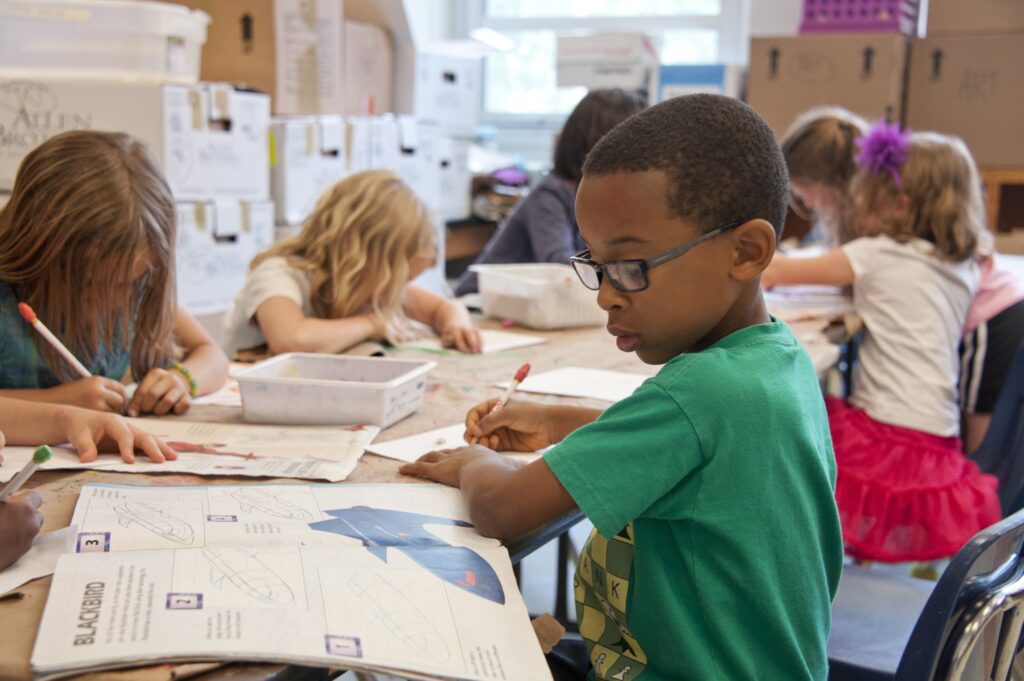Elementary school teachers have a unique opportunity to instill valuable life skills in students from an early age. One such skill that can set them on a path to success is SMART goal setting. It’s also a fantastic tool for young learners, and learners of all ages! In this blog post, we’ll explore how you can introduce SMART goal setting to your students in an easy, fun, and upbeat way.
What Are SMART Goals?
Before diving into the practical tips for implementing SMART goal setting in your classroom, let’s briefly review what SMART goals are:
S – Specific: Goals should be clear and specific, answering the questions: What, Why, Who, Where, and Which?
M – Measurable: Goals should include a way to track progress, usually through numbers, so you can see when you’ve achieved them.
A – Achievable: Goals should be challenging but still possible to attain. They should stretch students’ abilities without overwhelming them.
R – Relevant: Goals should be relevant to the student’s interests, learning, and life, making them meaningful.
T – Time-bound: Goals should have a deadline to create a sense of urgency and motivation.
Now, let’s explore how you can introduce SMART goals to your elementary school students:
- Make It Engaging: Start by explaining SMART goals in a way that’s relatable to young minds. Use examples that resonate with their interests, such as getting better at a favorite sport, improving a reading level, or learning a new art skill.
- Create a Vision Board: Ask your students “What are your hopes and dreams for the school year ahead?” Then ask them to create a vision board filled with pictures and words that represent their goals. This visual representation will make their aspirations more tangible and exciting.
- Set Goals Together: Encourage students to share their goals with you and their peers (this could be optional). This collaborative approach fosters a supportive and motivating classroom environment.
- Break Goals into Smaller Steps: Help students break down their goals into smaller, manageable steps. This process teaches them that big dreams can be achieved through consistent effort.
- Use Goal Journals: Provide each student with a goal journal where they can write down their goals, track progress, and reflect on their journey. This tool helps them stay organized and accountable.
- Celebrate Achievements: Celebrate both small and big achievements! Recognize students when they make progress toward their goals, and create a positive atmosphere of encouragement.
- Encourage Adaptability: Teach students that it’s okay to adjust their goals as they go along. Life can be unpredictable, and flexibility is a valuable skill.
- Regular Check-Ins and Progress Monitoring: Set aside time for regular goal check-ins. Use rubrics, checklists, graphs, charts, or journal entries. Discuss their progress, obstacles they’ve faced, and strategies to overcome challenges. Let students do a ‘turn and talk’ and share with a classmate. Let students create a video recording or a video diary of their progress.
- Showcase Success Stories: Share stories of people who have achieved their goals, especially those who started young. This can be a source of inspiration for your students.
By introducing SMART goal setting to your elementary school students in a fun and upbeat way, you’re not just teaching them a valuable life skill; you’re also nurturing their self-confidence, motivation, and determination.
References:
Six Activities That Inspire A Goal-Setting Mindset In Students. (2023). Retrieved 13 September 2023, from https://www.edutopia.org/article/6-activities-inspire-goal-setting-mindset-students
Strategies for Supporting Student Goal-Setting. (2023). Retrieved 13 September 2023, from https://www.edutopia.org/article/supporting-student-goal-setting
Tucker, C. (2021). Vision Boards: Start the Year with a Visual Goal Setting Exercise – Dr. Catlin Tucker. Retrieved 13 September 2023, from https://catlintucker.com/2021/08/vision-boards/
Wehmeyer, M. & Zhao, Y. (2020) Teaching Students to Become Self-Directed Learners. Alexandria, VA: ASCD.

